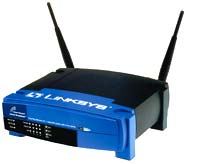Best
of 2001
is a wide range of products
Apple pioneers
best new technology
by Alan Zisman (c) 2001
First published in Business in
Vancouver,
Issue #634, December 18-24, 2001: GearGuide column
t's the time
of year for looking back, so here are Gear guide's best and the worst
for
2001.
The best
computers
It was a year
when many business and home consumers decided it was time to get off
the
upgrade treadmill. Despite the slowdown, Apple
Computers remained profitable and produced the most-improved
and
best computers of the year with its two notebook lines.
The Powerbook
G4 is perhaps the computer on the market with the highest drool factor,
from its titanium-metal body to its extra-wide 15" screen: just right
for
watching DVD movies. Its high-end pricing ($3,700-$5,000) keeps it out
of the mass-market, however.
Apple's iBook,
newly redesigned, is now more conventional, sporting a clean, ice-white
appearance that makes it look like the Titanium Powerbook's younger
sibling
(about $2,000). It's light on weight and size, but long on battery-life
and connection features making it a good choice for the majority who
don't
really need the G4's extra graphics power. And yes, it is
possible
to live without Windows.
The best
technologies
Two technologies
that, fittingly, were first popularized by Apple, spread to the wider
PC
universe this year. Both are officially known by awkward numerical
names,
but have gained more user-friendly nicknames.
 IEEE802.11b
(also known by Apple users as Airport, and by everyone else as WiFi) is
a standard for wireless Internet connections and networking. This year,
it started showing up in homes and offices, hotels, convention centres
and selected Starbucks outlets. Increasingly affordable
products
from companies such as LinkSys,
dLink, 3Com, Intel and even
Apple generally
work well together.
IEEE802.11b
(also known by Apple users as Airport, and by everyone else as WiFi) is
a standard for wireless Internet connections and networking. This year,
it started showing up in homes and offices, hotels, convention centres
and selected Starbucks outlets. Increasingly affordable
products
from companies such as LinkSys,
dLink, 3Com, Intel and even
Apple generally
work well together.
IEEE1394 (referred
to as Firewire by Apple, iLink by Sony
and 1394 by everybody else) is a way to connect gadgets to computers at
some 40 times faster than the more commonplace USB. That makes it
perfect
for connecting digital camcorders and increasingly popular for
connecting
external drives, music players and more. While it's built into Apple
and
Sony computers, it's still an optional add-on for others, but it is
well
worth adding on.
Best software
for the rest of us
The envelope
please.... Without further ado, the winner is Adobe
Photoshop Elements. Its big brother Photoshop has long been the
industry
standard for graphics professionals, but sports a professional price
and
a professional-sized learning-curve.
Photoshop Elements
delivers 80 per cent of the power (more than most of us will ever need)
for about 20 per cent of the price (about $160) and adds in some nice
tricks
(like easily creating panoramic images) that are hard to do in the
heavy-duty
edition. For Mac and Windows.
Worst of the
year
Internet
gadgets: This year, you could buy Internet-enabled radios and
stereos
and dedicated mini-computers. But hardly anyone did, costing a lot of
companies
that should have known better a lot of money.
Internet
on cell phones: Similarly, the major cell networks offered Web
access
on their digital phones. Even though the pages displayed were
reformatted
to fit on tiny screens, the need to download a new page every few lines
and the awkwardness of entering text and navigating using a phone
keypad
made this a non-contender.
Major company
that's least sure where it's going: Palm wins hands-down. Though
Palm-OS
handhelds still account for the bulk of the so-called "personal digital
assistant" market, Palm seems to have lost its vision, in the face of
continuing
competition from (surprise!) Microsoft.
